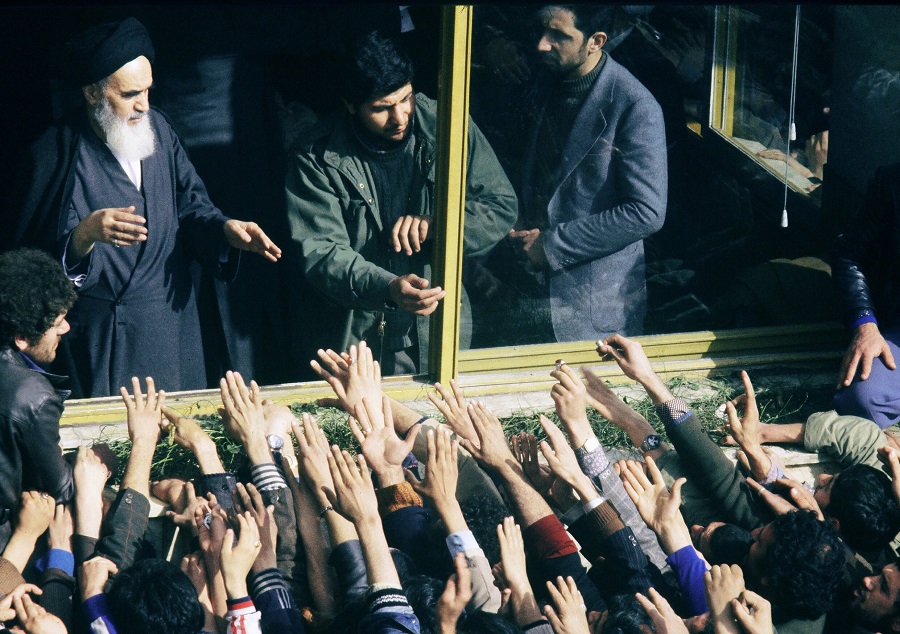Iranians still seeking democracy 40 years on from revolution

The 40th anniversary of the departure of Shah Mohammed Reza Pahlavi from Iran is marked on Wednesday. When the last king of Iran, his family and loyalists fled the country on Jan. 16, 1979, it not only marked the end of the Pahlavi dynasty, but also signaled the end of thousands years of monarchy (the shah proudly celebrated the Persian monarchy and empire’s mythical 2,500th anniversary in 1971 by hosting an unprecedented event — one of the most expensive and luxurious parties in the world — amid the ruins of Persepolis).
There were several major reasons behind the people’s uprising against the shah, some of which continue to resonate in the current era. First of all, from the outset of his authoritarian rule, Pahlavi lacked the legitimacy, power or charisma he needed to rule the country as a king. To maintain the monarchy, his father Reza Shah was forced to abdicate power in favor of his son by the Anglo-Soviet invasion of Iran during the Second World War.
But 1979 was not the first time that Pahlavi had to flee the country. In 1953, the shah fled to Italy before UK Prime Minister Winston Churchill and the US Eisenhower administration decided to overthrow the democratically elected government led by Mohammad Mossadegh and reinstate the shah.
In addition, under the shah’s rule, a large portion of the population was dissatisfied with the widespread political and financial corruption, lack of freedom of the press, and infringements on the rights for assembly and free speech, particularly in the political realm. There were also concerns over elitism, forced Westernization and modernization, disregard for the society’s religious traditions, the repression of human rights activists and political dissidents by security services, and the suppression of social movements and political parties, particularly the leftists, the communist Tudeh Party of Iran, and the People’s Mujahedin of Iran (PMOI).
Once the ruling clerics rose to the top and, as soon as they had a stranglehold on the country, they shifted gears to become one of the most ruthless regimes in Iran’s history
Dr. Majid Rafizadeh
Ordinary people and various oppositional groups — including Marxists, modernist Islamists, religious fundamentalists, constitutionalist liberals, leftists and reformists — joined hands, resulting in the Islamic Revolution of 1979. One of the groups was the Islamist party of Ayatollah Ruhollah Musavi Khomeini, which had thrived thanks to the shah’s brutal crackdown on other political entities.
To the surprise of many, Khomeini’s fundamentalist organization ultimately hijacked the revolution. After the shah fled the country, many Iranians did not conceive that Khomeini's party would be committing the atrocities that they are committing now — such as pursuing hegemonic ambitions and destructive behavior in the region and implementing militaristic and expansionist policies — or that they would have such an unrelenting hunger for power. Instead, the country thought it was on a smooth path toward democracy, with no expectation of returning to the shah’s era.
Even then-US President Jimmy Carter viewed Khomeini as a good, religious man. According to recently declassified documents, the Carter administration even paved the way for Khomeini to return to Iran. Many internationally known scholars, such as Michel Foucault, thought highly of the revolution. Foucault’s enthusiasm can be seen in his articles in European newspapers, written just before and after the revolution.
Unlike the shah, Khomeini initially benefited from having a charismatic character. Furthermore, other Iranian political parties, intellectuals and social movements significantly underestimated the clerics’ desire to rule the country. The clerics had previously portrayed themselves as spiritual and peaceful.
In addition, through his shrewdness and Machiavellian tactics, Khomeini, the founder of the Islamic Republic, did not emphasize the importance he placed on his revolutionary values, objectives and the role that clerics must play in politics. This enabled him to win the support of liberals, leftists and modern Islamists, who mostly believed that the clerics would hand power over to them after the revolution because they would not be interested in the business of running the government.
Khomeini and the ruling clerics were cognizant of the fact that it would have been a deal-breaker if he had mentioned that his fundamentalist and revolutionary principles, such as imposing or exporting his interpretation of Shiite thought, were non-negotiable.
However, once the ruling clerics rose to the top and, as soon as they had a stranglehold on the country, they shifted gears to become one of the most ruthless regimes in Iran’s history. To consolidate and maintain power, thousands upon thousands of people were executed and many continue to be killed and tortured simply for voicing their opinion. In a four-month period in 1988, according to human rights groups, some 30,000 political prisoners were hanged simply for suspected loyalties to anti-theocratic resistance groups, mainly the PMOI. The purge was largely ignored by media outlets.
The shah’s departure from Iran marked the death of the country’s monarchy, but most Iranians are not seeking to return to that era. They are searching for a genuinely representative and democratic system of governance, which they could not find either in the shah’s monarchy or the current theocracy.
- Dr. Majid Rafizadeh is a Harvard-educated Iranian-American political scientist. He is a leading expert on Iran and US foreign policy, a businessman and president of the International American Council. Twitter: @Dr_Rafizadeh









































